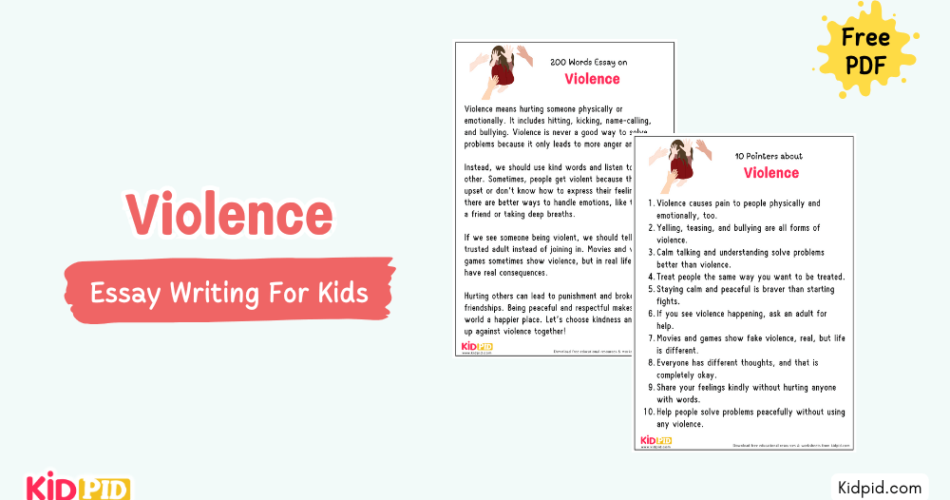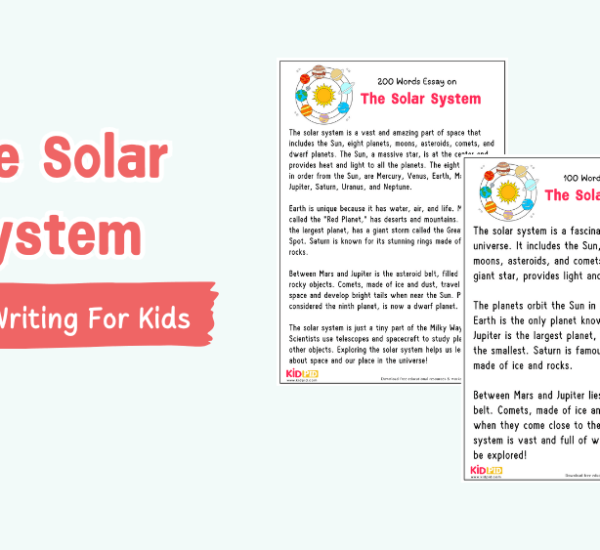Violence is a serious issue that affects individuals, families, and society in many harmful ways. It can take physical, emotional, or social forms, leaving lasting negative impacts. This essay discusses the causes, effects, and possible solutions to violence, along with key points and questions for better understanding.
10 Pointers About Violence
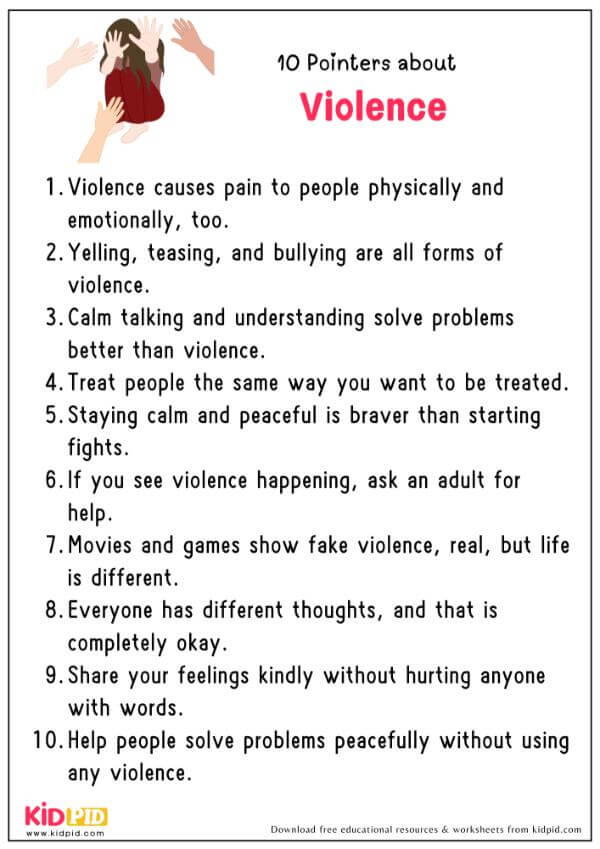
- Violence causes pain to people physically and emotionally, too.
- Yelling, teasing, and bullying are all forms of violence.
- Calm talking and understanding solve problems better than violence.
- Treat people the same way you want to be treated.
- Staying calm and peaceful is braver than starting fights.
- If you see violence happening, ask an adult for help.
- Movies and games show fake violence, real, but life is different.
- Everyone has different thoughts, and that is completely okay.
- Share your feelings kindly without hurting anyone with words.
- Help people solve problems peacefully without using any violence.
Short Essay On Violence
Essay On Violence in 100 Words
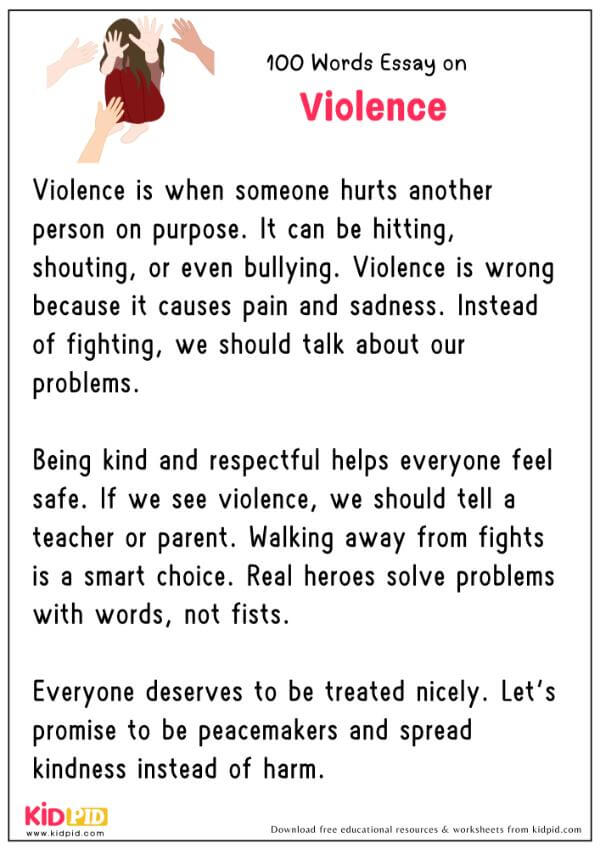
Violence is when someone hurts another person on purpose. It can be hitting, shouting, or even bullying. Violence is wrong because it causes pain and sadness. Instead of fighting, we should talk about our problems. Being kind and respectful helps everyone feel safe. If we see violence, we should tell a teacher or parent. Walking away from fights is a smart choice. Real heroes solve problems with words, not fists. Everyone deserves to be treated nicely. Let’s promise to be peacemakers and spread kindness instead of harm.
Essay On Violence in 200 Words
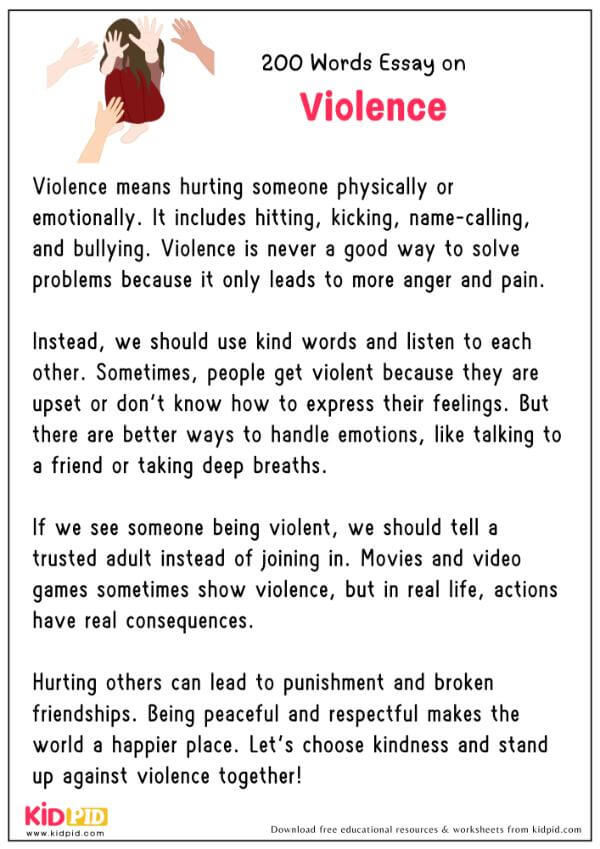
Violence means hurting someone physically or emotionally. It includes hitting, kicking, name-calling, and bullying. Violence is never a good way to solve problems because it only leads to more anger and pain. Instead, we should use kind words and listen to each other.
Sometimes, people get violent because they are upset or don’t know how to express their feelings. But there are better ways to handle emotions, like talking to a friend or taking deep breaths. If we see someone being violent, we should tell a trusted adult instead of joining in.
Movies and video games sometimes show violence, but in real life, actions have real consequences. Hurting others can lead to punishment and broken friendships. Being peaceful and respectful makes the world a happier place. Let’s choose kindness and stand up against violence together!
Essay On Violence in 300 Words
Violence is a serious problem that affects many people, including children. It can be physical, like hitting or pushing, or emotional, like bullying and yelling. Violence hurts people and makes them feel scared and sad. It is never the right way to solve disagreements.
Many times, people become violent because they are angry, frustrated, or don’t know how to express their feelings properly. Instead of using fists or harsh words, we should learn to communicate calmly. Taking deep breaths, counting to ten, or walking away can help control anger.
Bullying is a common form of violence in schools. Calling names, spreading rumors, or leaving someone out on purpose can hurt just as much as physical harm. If we see bullying happening, we should stand up for the victim or report it to a teacher. Being a bystander and doing nothing is just as bad as joining in.
Parents, teachers, and friends can help by teaching peaceful ways to handle conflicts. Playing fair, sharing, and respecting differences are important values. Even in sports or games, we should follow the rules and avoid rough behavior.
The media sometimes makes violence look exciting, but in reality, it causes pain and trouble. Real-life heroes solve problems with wisdom, not force. By choosing kindness over violence, we make our homes, schools, and communities safer and happier. Let’s all be peacemakers and spread love instead of harm!
Long Essay On Violence in 500 Words
Introduction
Violence is a destructive behavior that involves physical, emotional, or psychological harm to others. It can occur in various forms, including domestic abuse, street violence, war, and cyberbullying. Violence affects individuals, families, and societies, leading to long-term consequences. Understanding its causes, effects, and possible solutions is essential to creating a safer world.
Causes of Violence
Several factors contribute to violent behavior. Poverty and lack of education often lead to frustration and aggression. Exposure to violent media, such as movies and video games, can desensitize individuals to real-life violence. Family background also plays a role—children who witness abuse at home are more likely to become violent themselves. Additionally, substance abuse and mental health issues can trigger aggressive actions.
Effects of Violence
The impact of violence is far-reaching. Victims suffer physical injuries, emotional trauma, and even death. Families of victims experience grief and financial burdens due to medical or legal expenses. Communities with high violence rates face economic decline as businesses avoid such areas. Moreover, violence creates a cycle of revenge, where victims may become aggressors in the future.
Solutions to Violence
Preventing violence requires a multi-faceted approach. Education plays a key role—teaching conflict resolution and empathy in schools can reduce aggression. Governments should enforce strict laws against violence while providing rehabilitation programs for offenders. Community initiatives, such as neighborhood watch groups, can promote safety. Additionally, mental health support and poverty reduction programs can address the root causes of violent behavior.
Conclusion
Violence is a serious issue that harms individuals and societies. By understanding its causes and effects, we can implement effective solutions. Education, law enforcement, and community efforts are crucial in reducing violence. A collective effort from individuals, governments, and organizations can create a more peaceful world.
FAQ on Violence
Q1. What is violence?
Ans. Violence is when someone hurts others physically or emotionally.
Q2. Why is violence harmful?
Ans. Because it causes pain, fear, and sadness.
Q3. What are some examples of violence?
Ans. Hitting, yelling, bullying, and name-calling.
Q4. What should we do instead of fighting?
Ans. We should talk calmly and solve problems with words.
Q5. What should you do if you see violence?
Ans. Tell a trusted adult, like a teacher or parent.
Q6. Why do some people act violently?
Ans. They may be angry, frustrated, or unable to express feelings.
Q7. How can we manage anger without violence?
Ans. By taking deep breaths, walking away, or counting to ten.
Q8. How does the media affect views on violence?
Ans. Violent games or movies can make real violence seem normal.
Q9. What is bullying, and why is it wrong?
Ans. Bullying is hurting others on purpose, and it causes emotional pain.
Q10. How can we help stop violence in our communities?
Ans. By being kind, respectful, and solving problems peacefully.
Violence harms individuals and society by spreading fear, pain, and division. Promoting peace, empathy, and understanding is essential to building a safer, kinder world where everyone can live with dignity and harmony. To explore more, visit our website and explore more paragraphs, essays, worksheets, flashcards, Quizzes, and other interactive resources. Don’t forget to follow us on YouTube & Facebook.
You might also like
Japan: Essay, 10 Pointers & Questions

Explore Japan’s unique blend of tradition and innovation: four islands, vibrant Tokyo, sushi and tea ceremonies, cherry blossoms, bullet trains, anime, festivals, hot springs, bamboo forests, and iconic sports.
Volunteering: Essay, 10 Pointers & Questions
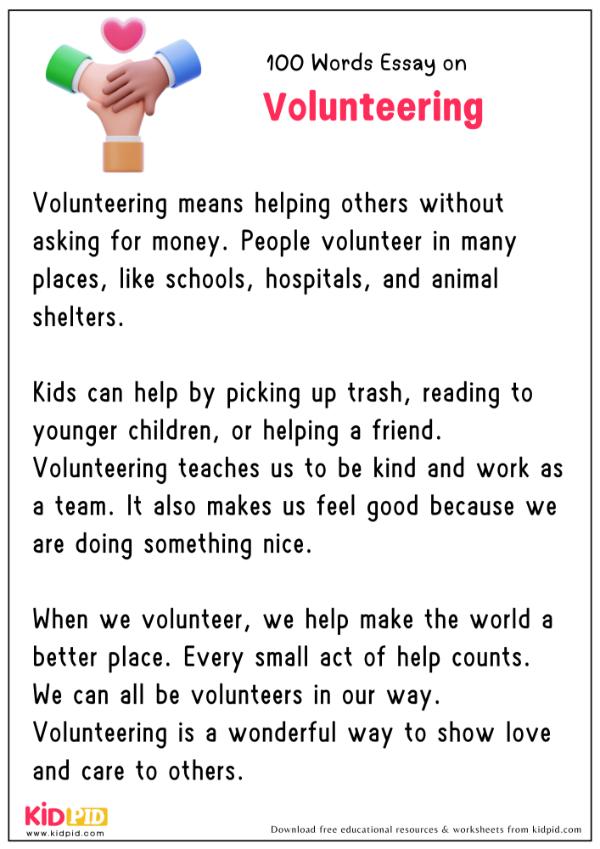
Volunteering means helping others selflessly. It teaches kindness, teamwork, and empathy. Anyone—kids included—can volunteer at schools, hospitals, parks, or shelters to spread joy, learn skills, and build caring communities.
Othello: Essay, 10 Pointers & Questions

Shakespeare’s Othello is a tragic tale of a noble Moor undone by Iago’s deception. Themes of jealousy, trust, betrayal, racism, handkerchief symbolism, tragic deaths, and emotional collapse unfold.
Artificial Intelligence: Essay, 10 Pointers and Questions
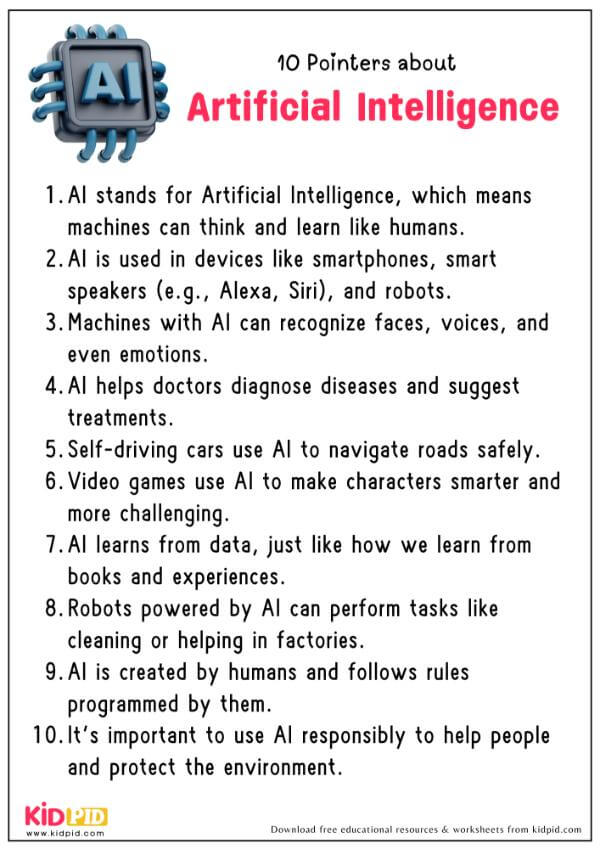
Artificial Intelligence teaches machines to think and learn like humans—seen in Siri, self-driving cars, and healthcare diagnostics. It boosts convenience and efficiency, but must be used responsibly to benefit all.

